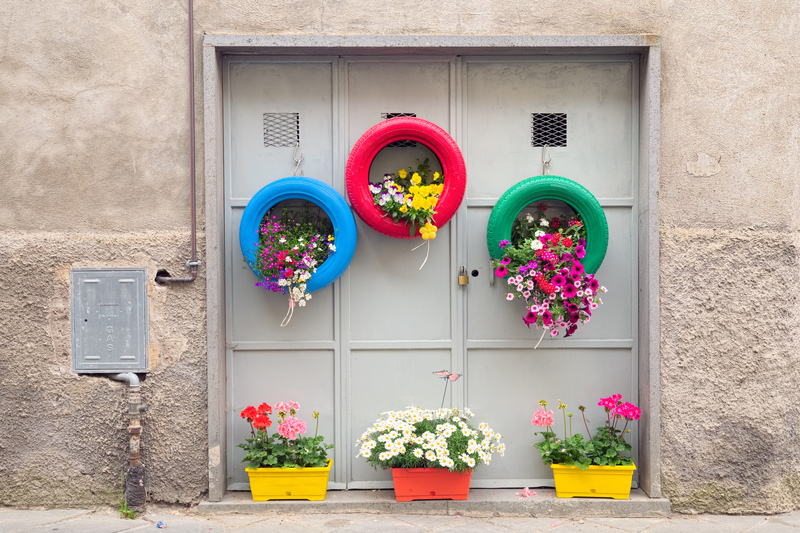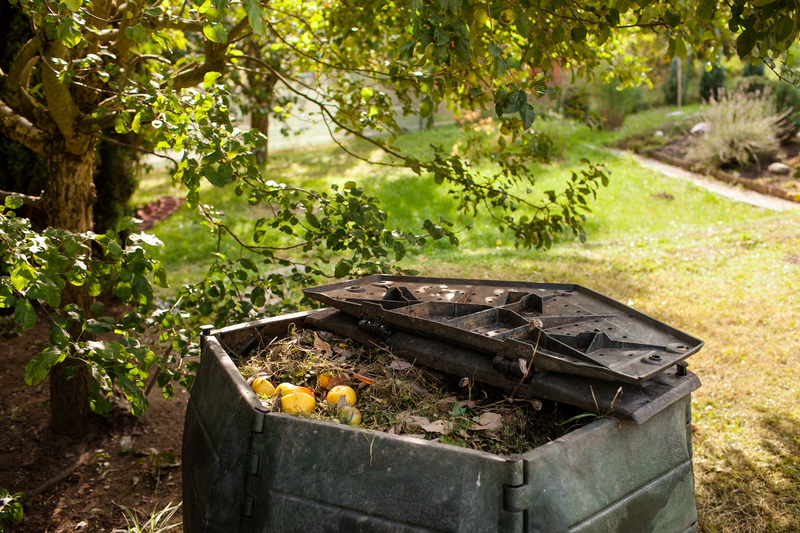Packaging and Cardboard: Beyond the Box -- A Comprehensive Exploration
In today's fast-paced world, packaging plays a vital role, silently determining the first impression a customer experiences with a product. Among the many materials available, cardboard stands out as a cornerstone of modern packaging. However, there is much more to packaging and cardboard than just a simple box. This comprehensive article explores the fascinating journey of packaging solutions, the versatility of cardboard, and its transformative impact on sustainability, branding, and consumer experience.

Understanding the Fundamentals: What is Cardboard Packaging?
Cardboard has been at the heart of the packaging industry for decades. Despite its humble appearance, cardboard is a multifunctional material that combines strength, flexibility, and adaptability. The term "cardboard" is often used interchangeably with "corrugated fiberboard," though there are key distinctions.
Types of Cardboard Used in Packaging
- Corrugated Board -- Comprised of a fluted corrugated sheet sandwiched between two liners. This structure provides resilience and cushioning, making it ideal for shipping and heavy products.
- Paperboard -- A single-layered, thinner material used for lightweight packaging such as cereal boxes, tissue cartons, and cosmetic containers.
- Greyboard -- Manufactured from recycled paper, often used for book covers, rigid boxes, and luxury packaging solutions.
The diversity in cardboard packaging types ensures that a variety of industries--from food to electronics to fashion--can find a tailored solution that meets their precise needs.
The Evolution of Packaging: More than Just Boxes
Packaging has undergone a dramatic transformation. Gone are the days when packaging was merely a utilitarian afterthought. Now, it's an integral aspect of product branding, protection, and environmental stewardship.
Historical Context: From Function to Form
Originally, the main goal of packaging was straightforward: protect the product during transport. As commerce expanded, so did the requirements for more robust and attractive packaging. Cardboard's rise in popularity in the late 19th and 20th centuries coincided with increased demand for mass-produced, easily shipped goods.
Today, cardboard packaging design also includes:
- Brand storytelling and aesthetics
- User-friendly opening and closing mechanisms
- Enhanced shelf presence and retail visibility
- Sustainability and recyclability considerations
Modern Applications: Cardboard Beyond the Standard Box
Perhaps the most exciting development in the packaging world is the creative use of cardboard in applications far beyond the classic shipping box.
Creative and Functional Cardboard Solutions
- Display Stands and Point-of-Sale Displays: Businesses use precision-engineered cardboard stands to catch consumers' eyes and drive impulse sales in stores.
- Protective Inserts and Trays: Customized cardboard inserts cradle fragile products such as electronics, glassware, and gourmet foods.
- Premium and Gift Packaging: Sophisticated multi-layered cardboard boxes add an extra layer of excitement for luxury products and gifts.
- Sustainable Shipping Solutions: Innovative cardboard packaging replaces plastic fillers and blisters, reducing environmental impact.
- Furniture and Fixture Design: Designers now craft temporary furniture, exhibition booths, and even architectural structures from reinforced cardboard.
These applications highlight the infinite versatility of cardboard in packaging solutions, making it an indispensable material in contemporary design and logistics.
Packaging and Cardboard: Sustainability and the Future
As global concern for the environment intensifies, the packaging industry has responded by prioritizing eco-friendly materials and practices. Cardboard packaging sustainability leads this movement, offering a renewable, recyclable, and biodegradable alternative to plastics and non-renewable substrates.
Why is Cardboard Environmentally Friendly?
- High Recyclability: Most cardboard packaging is easily recycled, with recycling rates surpassing 80% in many countries.
- Compostable Nature: Cardboard breaks down naturally, minimizing landfill waste.
- Renewable Resource: Sourced from managed forests, cardboard production supports sustainable forestry practices.
- Reduced Carbon Footprint: Cardboard manufacturing requires less energy and water compared to alternatives like plastics or metals.
Many brands now proudly display sustainability certifications on their cardboard packaging boxes, signaling to consumers their commitment to greener practices.
The Science of Cardboard Packaging Innovation
To keep up with the demands for strength, efficiency, and sustainability, cardboard is continuously evolving through research and development.
Engineering for Strength and Durability
Modern cardboard packaging incorporates advances such as:
- Multi-ply constructions combining different flute sizes for strength and flexibility
- Moisture-resistant coatings to protect perishables and frozen goods
- Innovative adhesive and printing technologies for better sealing and brand presentation
_The result?_ Lightweight yet robust packaging that protects contents, optimizes storage, and reduces shipping costs.
Smart Packaging: The Future is Connected
The integration of technology has ushered in the era of smart packaging. Cardboard boxes can now feature RFID tags, QR codes, and sensors to provide real-time tracking, product authenticity, and interactive customer experiences.
Cardboard Packaging and Branding: First Impressions Count
Packaging is often called the "silent salesman," and for good reason. The tactile and visual characteristics of cardboard packaging boxes enhance the unboxing experience, crucial in the age of social media.
Brand Storytelling Through Packaging
- Custom Printing: High-quality inks and die-cutting techniques turn plain boxes into visual masterpieces bearing logos, patterns, and product information.
- Texture and Finish: Matte or glossy laminations, embossing, and spot UV coatings help brands stand out and communicate quality.
- Personalization: Variable data printing allows for individualized packaging, a key differentiator in e-commerce and subscription services.
*Great packaging transforms a simple cardboard box into a memorable brand ambassador: a touchpoint that resonates with customers long after the sale.*
Challenges in Cardboard and Packaging Design
While cardboard offers a robust toolkit for packaging innovation, it is not without challenges. Some of the key concerns include:
- Moisture Sensitivity: Prolonged exposure to water can compromise cardboard's structural integrity, necessitating additional coatings or liners.
- Weight Limitations: Extremely heavy products may require supplementary materials or reinforced designs.
- Supply Chain Complexity: Sourcing sustainable raw materials and meeting compliance standards can be complex for global brands.
Nevertheless, continuous improvements ensure that cardboard remains a preferred material for packaging solutions worldwide.
Consumer Trends: What Do Shoppers Want?
Consumer expectations around packaging have shifted dramatically. Today's shoppers look for more than just product protection--they seek packages that are:
- Eco-friendly and easily recyclable
- Visually appealing and gift-worthy
- Informative with clear labeling and instructions
- Resealable or reusable to maximize utility
- Compact and space-efficient
Brands that listen to these trends gain a competitive edge and foster deeper customer loyalty.
Innovation Spotlight: Recent Trends in Cardboard Packaging Design
The latest innovations in packaging and cardboard go far beyond upgraded aesthetics. Here's a look at some cutting-edge trends:
Minimalism and Eco-awareness
Consumers are responding to minimalist, reduced-material designs that reduce waste without sacrificing protection or style.
Reusable and Multi-functional Packaging
Creative brands are developing cardboard packages that can be repurposed as storage, display cases, or even toys, extending the life of the package and reducing its environmental impact.
Digital Printing and Interactive Elements
Digital printing enables vivid, detailed artwork on shorter runs, perfect for limited-edition packaging or personalized experiences. QR codes and augmented reality features offer direct engagement between the brand and end-users.
Case Studies: Succesful Cardboard Packaging Campaigns
1. Ikea's Flat-Pack Revolution
Ikea transformed furniture packaging by using high-strength cardboard and ingenious foldable design, minimizing space, reducing shipping costs, and making assembly easier for consumers.
2. Apple's Premium Device Packaging
Apple's minimalist, tactile cardboard boxes set a new standard for consumer electronics packaging. The "unboxing" moment became an iconic part of its brand appeal.
3. Gourmet Food Boxes
From subscription meal kits to bespoke confectionery brands, companies use personalized, insulated cardboard boxes to ensure freshness and create an elevated customer experience.

How to Choose the Right Cardboard Packaging Solution
- Assess product fragility -- Do you require thick, corrugated board or is lightweight paperboard sufficient?
- Consider branding needs -- Is a custom printed or luxury finish necessary?
- Factor in sustainability goals -- Opt for recycled content and eco-friendly coatings.
- Think about end-user experience -- Is resealability or easy opening important?
- Review cost-efficiency -- Balance design innovation with budget constraints.
Consulting with a packaging expert can ensure optimal protection, branding, and sustainability, tailored for your business.
Conclusion: The Future of Packaging and Cardboard is Bright
Packaging and cardboard have advanced far beyond functional boxes. Today, they embody innovation, sustainability, and strategic branding. As consumer consciousness grows and industries evolve, the myriad applications of cardboard packaging will continue to shape the way we store, ship, and savor products.
Whether you're a business owner, product designer, or eco-minded consumer, understanding the potential of packaging and cardboard--beyond the box--means staying ahead in a dynamic and ever-changing marketplace. By choosing sustainable, creative, and customer-focused packaging solutions, we can all contribute to a smarter, greener, and more engaging future.
- Embrace innovative design.
- Prioritize sustainable materials like cardboard.
- Recognize the marketing power of packaging.
After all, in the world of packaging, cardboard is so much more than just a box -- it's a canvas for creativity, a champion of the environment, and a bridge to unforgettable customer experiences.